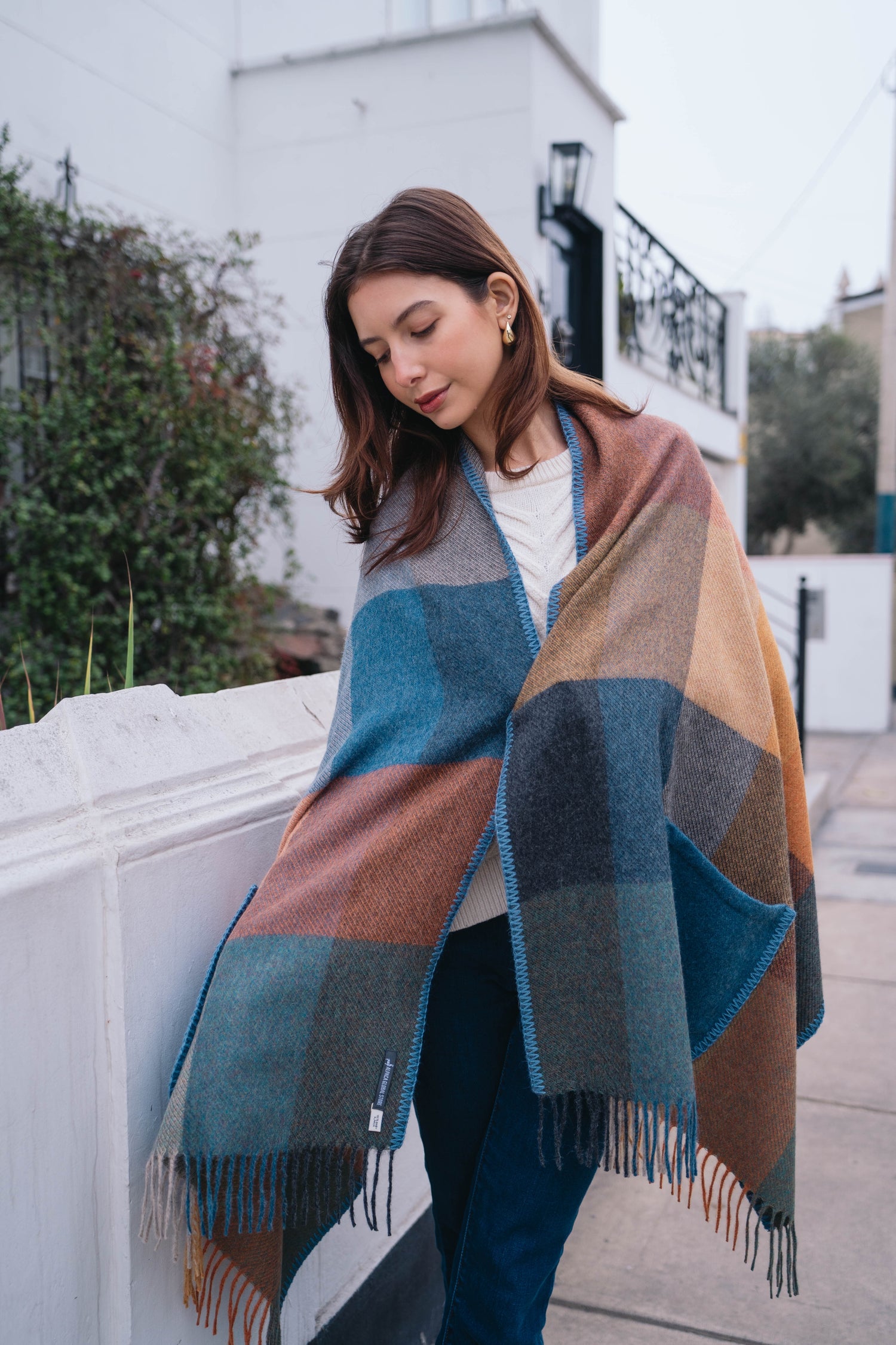
What is an Alpaca? What Are the Differences Between Alpacas and Llamas? Discover Everything About This Incredible Animal and Its Valuable Wool
Share
The alpaca is a domesticated animal native to the Andean regions of South America, particularly in countries like Peru, Bolivia, Ecuador, and Chile. It belongs to the camelid family, along with the llama, vicuña, and guanaco. For thousands of years, alpacas have played a crucial role in Andean communities, both for their cultural contributions and for producing wool renowned worldwide for its softness, warmth, and sustainability.
General Characteristics of the Alpaca
Alpacas are medium-sized animals, weighing between 45 and 80 kg and standing about one meter tall at the shoulder. They are characterized by their long necks and thick fleece. There are two main types of alpacas:
- Huacaya: This is the most common type. Huacaya alpacas have dense, fluffy wool with small crimped curls, making it ideal for soft, voluminous garments.
- Suri: Less common but highly prized in luxury fashion, Suri alpacas have silky, long wool that falls in shiny, flowing locks, giving them an elegant and refined appearance.

The Natural Habitat of Alpacas
Alpacas thrive at high altitudes, typically between 3,500 and 5,000 meters above sea level in the mountainous Andes. The extreme conditions of this habitat, with significant temperature variations between day and night, have allowed alpacas to develop dense, warm wool that protects them from the cold. These traits are key to the superior quality of their wool.
Types of Alpaca Wool
Alpaca wool is classified into various categories based on the fineness and softness of the fibers:
- Baby Alpaca Wool: The finest and softest wool, obtained from the first shearing of a young alpaca. It is considered a luxury fiber comparable to cashmere.
- Royal Alpaca: Even finer than baby alpaca, Royal Alpaca is regarded as the most exclusive wool in high-end fashion.
- Fine Alpaca: Slightly thicker than baby alpaca but still soft, making it suitable for durable, everyday garments.
- Regular Alpaca: The thickest type, but still softer than many other animal fibers. It is commonly used for products like blankets or more robust textiles.
Unique Characteristics of Alpaca Wool
- Softness: Alpaca wool is celebrated for its softness, especially in the baby alpaca and Royal Alpaca grades, making it ideal for sensitive skin.
- Warmth and Lightness: Despite its lightness, alpaca wool offers excellent insulation, providing warmth without the bulk of other fibers.
- Water Resistance: Naturally water-repellent, alpaca wool is perfect for shielding against damp weather or light rain.
- Hypoallergenic: Lacking lanolin, alpaca wool is a great choice for people with sensitive skin or allergies.
- Durability: Alpaca fibers are stronger than other wools, ensuring that garments made from alpaca are long-lasting and resistant to wear.

Differences Between Alpacas and Llamas
Though alpacas and llamas belong to the same camelid family, there are notable differences between them, both in appearance and usage:
- Size: Llamas are significantly larger than alpacas. While an alpaca typically weighs between 45 and 80 kg, llamas can weigh up to 180 kg. Llamas are also taller and more robust.
- Use: Historically, llamas have been used as pack animals in the Andean regions, while alpacas are bred primarily for their wool. Although llamas also produce wool, it is coarser and less suitable for making soft garments like alpaca wool.
- Fleece: Alpaca wool is much softer and finer than llama wool, making it a more valuable and luxurious option in the textile industry. Llama wool, on the other hand, is coarser and typically used for items like blankets, ropes, and other products where softness is not essential.
- Temperament: Alpacas tend to be more timid and gentle than llamas, which can be more protective and aggressive when threatened. This behavioral difference influences how they are bred and managed in Andean communities.
Sustainable Fashion and Alpaca Wool
Alpaca wool has become a key resource in sustainable fashion. Unlike sheep or goats, alpacas have a much lower environmental impact due to their gentler and more efficient grazing methods. Alpacas also require less water and produce fewer greenhouse gases compared to other livestock. This low impact, combined with the longevity of their fibers, makes alpaca wool an eco-friendly and sustainable choice.
Alpacas are extraordinary animals not only for their role in Andean life but also for the superior quality of their wool. Their differences from llamas and other camelids position them as a valuable source of natural fiber in the fashion industry. By choosing alpaca wool products, you not only get soft, warm garments but also support sustainable practices and help preserve a cultural tradition that has endured for thousands of years in the Andes mountains.




